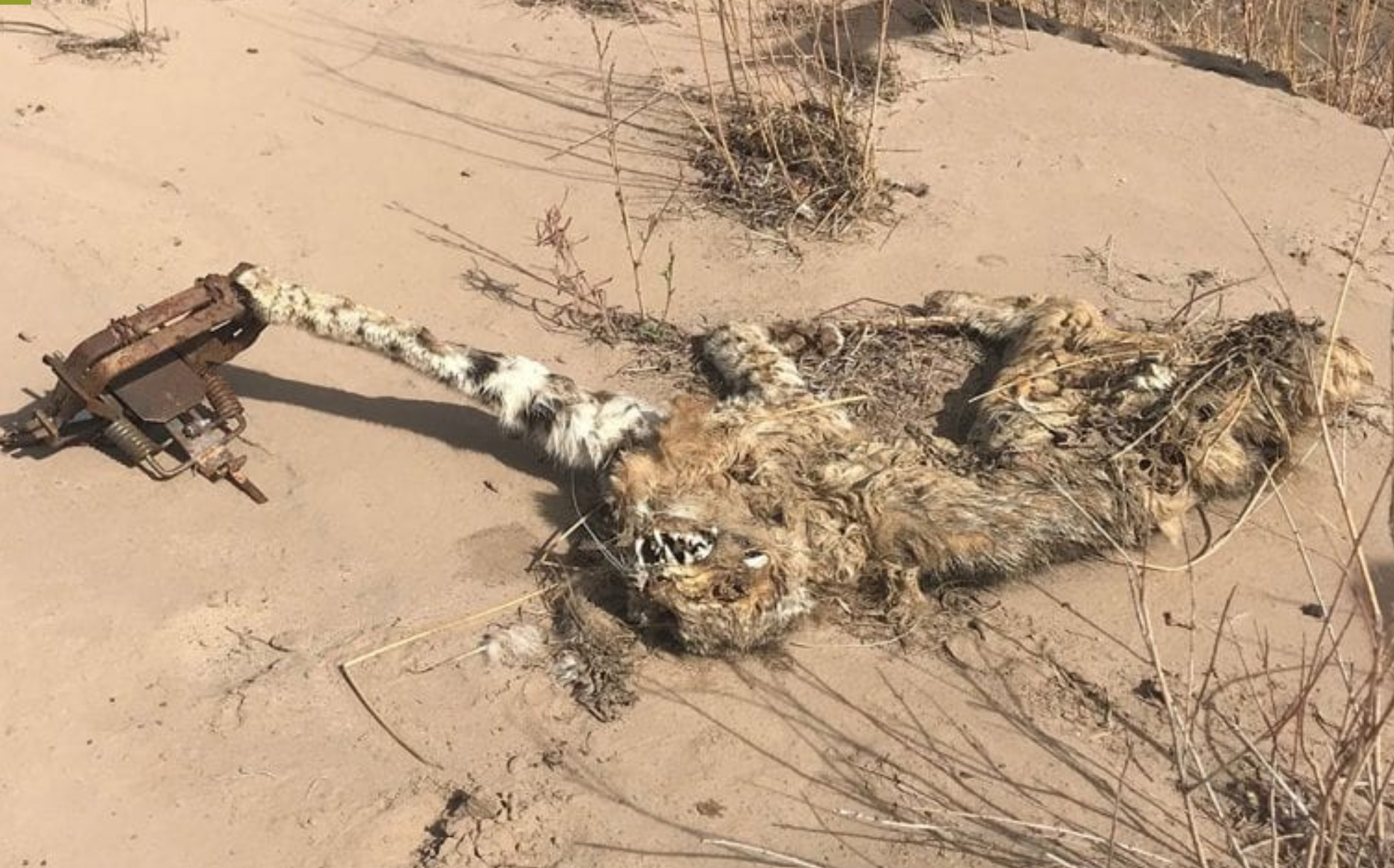The Cruelty of Incuriosity
Guardians’ John Horning encounters a trapping crime scene
I had never come across a crime scene before in my life. But this wasn’t just any crime scene. In this case, the victim was a bobcat. It was killed by an illegal trap. The bobcat suffered for a very long time before it died. To add insult to injury it died for no reason.
Last spring, I was hiking through a ranch in southern New Mexico just to clear my mind and enjoy the outdoors. The land there is mostly high desert grassland, with pockets of pinon and juniper. Bisecting the ranch from north to south is its crown jewel—a spring-fed perennial desert stream with a gallery forest of cottonwoods and willows. The stream is a natural wildlife corridor, for everything from large mammals such as bears and lions to migratory songbirds and other small wildlife.
The morning was cold, with a thin layer of overnight ice covering the ankle-deep water in the stream. As is my habit, I headed upstream to the property’s southern boundary to see if I could find any sign or sight of wildlife.
With few wildlife stirring that morning, I delighted myself in wandering through the thickets of young willow and cottonwood that had grown along the stream since the owners removed the hundred or so cattle that had grazed the stream’s vegetation nearly to the bone.
As I headed back downstream, I decided to retrace my steps and return to our campsite to timely assume my parental duties of my five-year-old twin boys. But at the last moment I took a detour with the deep red of winter coyote willow thicket enticing me downstream into new territory.
I entered a football-field-length willow thicket with the hope that I might come upon a Cooper’s hawk dining on a small songbird or a Great horned owl staring down at me from its perch. Unfortunately, neither happened. Instead, as I left the willow grove to cross the stream, I came upon the horrific sight of the dead bobcat with its outstretched arm ensnared in a steel leg-hold trap.
I crouched down to get a closer look at the animal. Incredibly, despite their relative abundance and my many days in the outdoors, I’d never seen a live bobcat in the wild. Notwithstanding the gruesome circumstances, and somewhat surprisingly to me upon further reflection, neither anger nor sadness arose in me. Instead, curiosity emerged.
First, I marveled at the bobcat’s beauty in death and wondered how much more beautiful it would be if it were still alive. Then, I wondered whether this animal was a mother or a father and whether it left any kits. Then more pragmatically: how did this trap get here on land where trapping is forbidden? After all, this was a private conservation ranch whose owners purchased the land to create a sanctuary for native wildlife. This wasn’t merely a crime against nature, it was a crime against human law.
Then, more gruesomely, I asked… how did it die: of starvation or dehydration? Then, more personally, what else could I do to end the barbaric injustice of trapping?
All these thoughts flushed over me as I gazed at the bobcat’s body. I lingered, wondering how or even whether I could leave the scene of the crime. After taking a series of photographs I felt I had adequately memorialized the bobcat and headed back to our campsite.
A philosopher named Richard Rorty coined the phrase “the cruelty of incuriosity.” When animals are trapped they suffer an immense cruelty. The least we can do is be curious about the circumstances of their lives and deaths. Anything less is like wounding them a second time—with the cruelty of incuriosity.
It’s a long, difficult path to end the injustice of trapping. But one of the ways we can bring an end to the barbaric practice in New Mexico and many other western states is to tell the stories of all the animals—domestic and wild—that have suffered, intentionally or accidentally, at the hands of a trap.
If we want to protect a vulnerable group we must tell their story. This is the story of one bobcat, who suffered for no reason. I wish I had gotten there sooner so I could free it. I still have that trap in my office and anytime someone comes into my office I tell them the story of the animal whose life came to an end in it.
Sharing these stories is the least we can do to acknowledge the suffering of these animals. If you have such a story, I hope you’ll share it.



